Congratulations on winning the recent Australian Nationals, the competition looked very tough , included Gavin Colby and Darren Smith.
Thanks for that, we are really pleased with the result. Our lead up and preparation was solid, we had plenty of great racing in Perth before the event. In the end it was super tight racing and came down to the wire. It’s always great fun sailing against teams like Gav and Worsty and Darren and Claire and any win is hard fought.
We had a good range of conditions overall, but lost one full day to too much breeze, so we were forced to sail seven races on the last day. It was brutal!!
With such close racing we just had to try to sail clean - as any mistakes were punished. In many of the races, although it was onshore, the breeze was shifty with some big pressure differences across the course (not to mention seaweed!!) so at times it was quite tricky. We always carry a compass when we race, and every so often it is very handy and this was one of those regattas - It really helped us around the course.
There was quite a swell running in most races, this made the down winds great fun. Always enjoy racing in a good swell that lets you steer aggressively and surf waves, it adds that extra dimension.
I understand that you are a relative newby to the Hobie 16 Class after achieving good success in the A Class. What influenced you to convert to the Hobie 16 and what has been your formula for raising to the top of the 16 Class so quickly?
In the Hobie scene, I guess I’m relatively new although I’ve been at it since 2006. I did sail Tornado and A Class (pre foiling) in Melbourne before moving 3,000 km across the country to Perth. The A Class fleet in Melbourne was world class and provided top-level racing. Initially I bought the A over to Perth. But there weren’t any other fast A Classes in Perth, and I soon got bored sailing around (although really quickly) by myself!! And without serious competition it made it much harder to prepare for big regattas and I felt that knocked the edge off my speed a bit.
While sailing around on the A Class in Perth, I sort of fell in with the Hobie fleet. There were always plenty of quick H16s out and about and the sailors were, in typical Hobie style, really welcoming and friendly. They were always encouraging me to borrow boats and do local regattas and eventually I was converted.
I bought my first H16 just before the 2006 Nationals in Perth, Darren Smith arranged for Suz to crew for me at the regatta, and for me this was a stroke of luck. Suz was an experienced H16 crew and really helped me get my head around it. We soon figured out that we were compatible on the boat and enjoyed sailing with each other. .At that time Suz was involved with Singapore Sailing Federation and over the next 12 months we were lucky enough to be invited to be the training partners for the Singapore H16 team at some pre Asian Games training camps. This involved some pretty intense training but got us on the pace pretty quick, I’m sure we got more out of it than the Singapore sailors!!!!.
In addition, the fleet in Perth has a heap of good sailors that really forced you to improve.
After having a successful A Cat Campaign, how did you adjust your sailing to be successfully on the much simpler Hobie 16?
It did take me a bit of time, and I used to have a fall-back position and Suz and I would often say this to each other, that on the H16 if it felt slow it was probably going quick!!!!
I generally had, and really focussed on, good boat speed on the A Class. And as the old saying goes good boat speed makes winning easy. In the A Class the rigs are so efficient you didn’t have to work the boat too hard at all, the actual sailing part was easy (I’m sure foiling has changed this).
However, with the transition to the H16, the boat speed advantages just weren’t there and I felt it was much harder to get a break on the fleet and soon found out that any lead is easily lost. Like anything, it came down to hard work - time on the water, some good training partners and getting to any regatta we could. The fundamentals of sailing are still the same.
My take on it is that, although the H16 setup may be simpler to other boats, but the H16 is a very technical boat to sail fast, and even now, every time we race we still seem to pick up subtle changes that can make a big difference is certain conditions.
Having Sailed against Guys like Americas Cup winner Glenn Ashby and Olympian Darren Bundocks in A Cats, how do you rate the level of competition in the Hobie 16 Class?
I really rate the level of competition in the H16 and I’d love to race Glenn or Darren on one, I still try to get Ashby on one every time I see him. I actually think that some of the toughest races I’ve sailed are the finals in a Hobie 16 world championship. Given that you’re not sailing your own boat, there are 55 other teams of which there are very few punters, and any mistake is almost unrecoverable, it awesome competition. Looking at H16 worlds results you often see top teams are carrying some big numbers, you don’t see that in many other catamaran fleets as they are often dominated by one or two teams / sailors that have the right set up or skill for the event.
At the last Australian Nationals we had three races in row against Gav and Worsty that were decided by a few seconds, it was great fun (would have been better if we’d won another one or two of them!!!). And the best part about it is that its fair and super friendly racing.
What are some of your favourite things about racing a 16?
There are plenty of things I like about the H16, but it all comes back the the people, the friendships made both locally and around the world make the boat and the racing that much better.
I also love the fact that I can sail it with my partner or my kids.
They are great sailing ‘value for money’ as they are fast ‘out of the box’, it’s not an arms race like many other classes. Even older boats are still quick. It also really helps with travel, the ability to travel across the country or the world and borrow a boat and race is brilliant.
I also reckon the Hobie 16 Worlds are awesome, it’s a unique event, that is not only great racing, its also a great party and all you need to do is turn up with your sailing gear!!.
Having watched video of you, your boat handling on the 16 it is exceptional. Do you practice it often, and maybe give us some insight into your tacking techniques.
Over time we have practiced a lot, I’m fortunate enough to have sailed with Suz for so long, so our timing and our roles are pretty well resolved. My thoughts on the key points to tacking are to (in a reasonable wind):
· Steer into the tack slowly, ease the rudders through the tack until the boat is almost head to wind then push them as far as they go. If you steer too aggressively it’s like putting the brakes on.
· Try to keep your weight back (and the skipper out on trapeze as long as possible) to promote the boat to swivel on the stern, and stop the bows ploughing through the water (be careful when its really windy –you might go over backwards),
· Keep the jib on until you pass through head to wind,
· When you pass through head to wind, about the time the crew releases the jib, it’s really important to ease a heap of main sheet at this point.
· When exiting the tack get out on trapeze as soon as possible to get power to allow acceleration out of the tack.
· Think about your routine is, know what you do and do the same thing every time
You also have raced in Europe and did the Europeans and Pro Sail Event in Sylt Germany. Could you elaborate on those experiences?
We did the Europeans in 2013 in Sardinia Italy, It was a great regatta and awesome fun and once again we met a lot of people and had some good close racing. Anyone who was there will remember the one day that this big off shore breeze came through – far out it was ballistic. They do regattas well in Europe and we’re looking forward to getting over there again this year.
World Cat in Sylt is another awesome event – and that what it is, it’s so much more that a regatta, it’s huge. I’d recommend anyone who gets a change to go should go. The regional or National associations should really support this event too, we’re very lucky as a Hobie community to have the opportunity to participate. The actual sailing is pretty intense, big waves, long days, lots of spectators, beach finishes, good parties, dj’s, bands and a small group of Hobie friends from around the world that you get to know well over the week– its an amazing event. We’ve been invited to head over there again this year and we’re really looking forward to it.
You have been sailing with Suzzi Ghent for a while now, how important has she been to your success?
I’d like to say its all me, but everyone who has seen us prepare for a regatta knows the truth, she really is the brains of the operation. We suit each other really well, she likes a lot of the things that I don’t!!! Is not uncommon to see Suz polishing the boat or reading the sailing instructions while I’m talking sh&*^%..t with my mates… Suz is a very good sailor in her own right, and has awesome knowledge on how it all works, from the rules to race management, weather, tactics etc, she loves the process.
We have very similar philosophies to sailing and we’ve able to bounce ideas off each other for a long time now, this has really helped to understand the H16 and how we can get the most out of it.
There seems to be a lot of theories out there on how to set the Hobie 16 up to go fast. What tips can you give us that you use? How much time have I got…..there’s a lot to this question, (if you ever see me on the beach come and ask me, I’m sure that will make more sense)
We like to keep the boat set up similar to what you get out of the box – or to what you’d use at the worlds. The key things that we check when setting a boat up are:
· get the rudders right, helm has to be neutral- for a quick check we hold a straight edge on the stern (can be a No 2 main batten) and it should go through the vertex of the blade (or there abouts), plus a slight toe-in maybe 5mm.
· Side stays / mast rake – we’ve been experimenting with mobile phone apps to measure mast rake – still a work in progress.
· Jib set up – get it as low as possible of the front chain plate / bridle, this allows the rig to be reasonable tight and lowers the sheeting angle and allows the leech to twist off and keep the slot open.
· Rig tensions firm – careful not to use too much because this can raise the jib sheeting angle and choke the slot.
· Mainsheet – on hard – block to block when on trapeze, it helps to depower by easing traveller. We try not to go past the toe strap, because you’ll lose height.
· Jib car move out as the wind picks up.
· Downhaul – depending on the breeze, but once two on the trapeze, it is on hard.
· Downwind – windward rudder up, always. Upwind, we don’t sail windward rudder up very often.
· Downwind weight forward as much as possible.
· Steering – don’t over do it up or down wind.
The Hobie 16 World's in Florida is approaching rapidly. What is on you racing schedule to prepare, and who do you list as the leading contenders?
Can’t wait for this regatta, we’re hoping to do lots of sailing leading up to it, we’re fortunate enough to have a very strong local fleet, so we’ll have a solid program going through out our winter.
As as above we’re also planning to do the Europeans in France and World Cat in Sylt/Germany. There are also a couple of local regattas that we’ll do including the Western Australian State Championships and hopefully the Queensland States – We’ll see.
Its hard to say at the moment, the entry list is still growing, I’m sure there will be plenty of quick teams We have trouble beating Darren Smith and Claire in club races in Perth so I’m sure they’ll there abouts. I’m hoping that there’ll be a big fleet and it’ll include a number of past worlds champions there like Gavin Colby, Blaine Dodds, Jerome LeGal, Mick Butler, Daniel Bjornholt these teams will be very hard to beat.
Sailing in WA where you guys always seem to have big winds, do you also concentrate on some light air practice?
Perth is known for the summer sea breezes (the Fremantle Doctor) that make for fantastic sailing, but they don’t go all year round. We’re lucky enough to have a keen group of sailors that do sail all year round. Suz and I really enjoy sailing through Winter when we get much lighter and more variable winds. We get our fair share of different conditions. Having said that – this year has been very windy. When your not going fast on a Catamaran what else do you like to do?
My kids (Lachy 13yrs and Grace 10yrs) keep us busy!!! We’re actively getting them into sailing and Hobies at the moment.
The Seabreezes are not only good for Hobie sailing. It was wave sailing (windsurfing) that bought me to WA in the first place as there are some world class waves and awesome windsurfing conditions. We get away whenever we can up North for a windsurfing and surfing holiday, but this year we’ll be on our way to Florida when we’d normally be up there.
With thanks for the photos from:
John Chapman (sailsonswan)
Lindsay Preece (Ironbark Photos)
Jens Hannemann

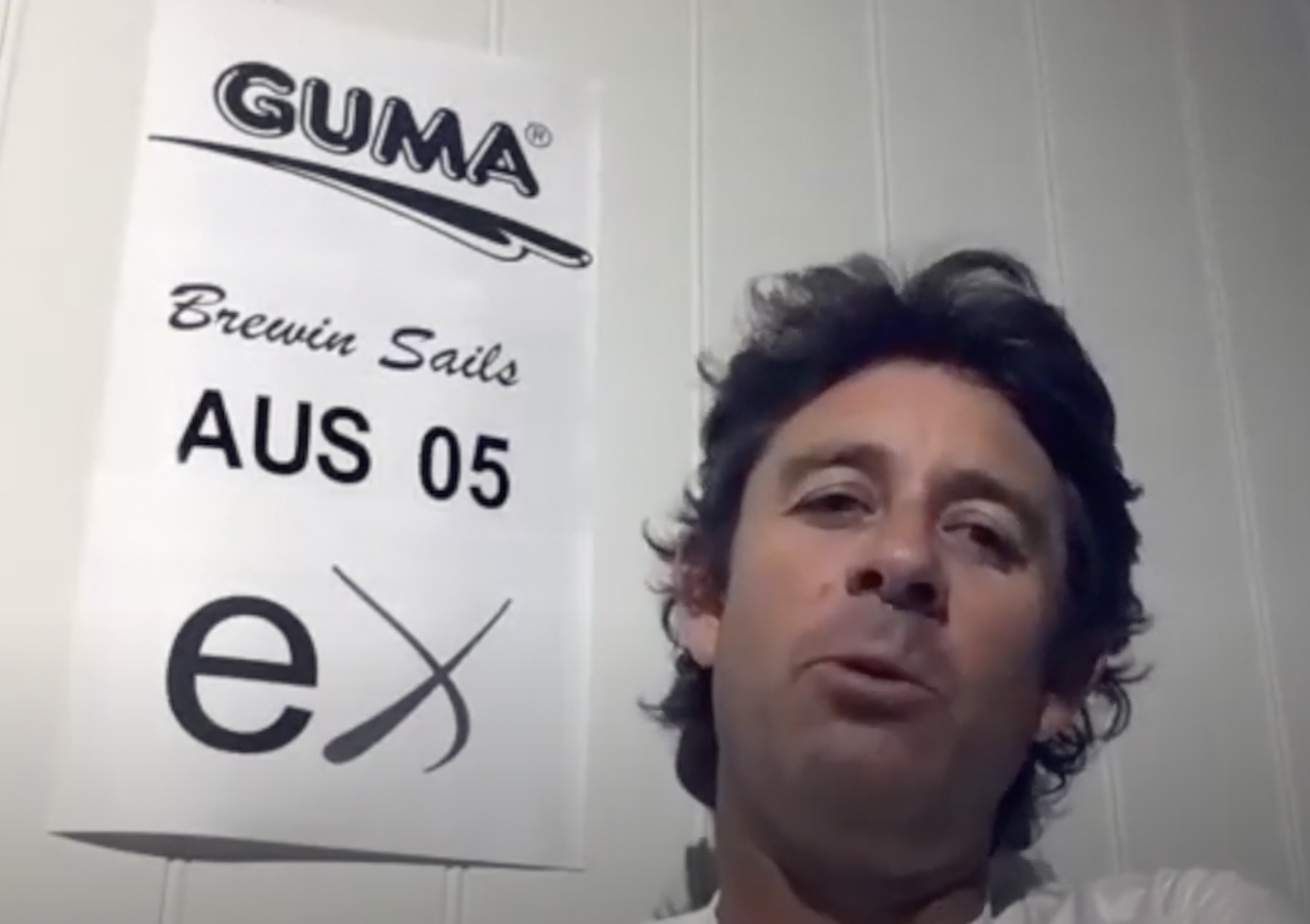
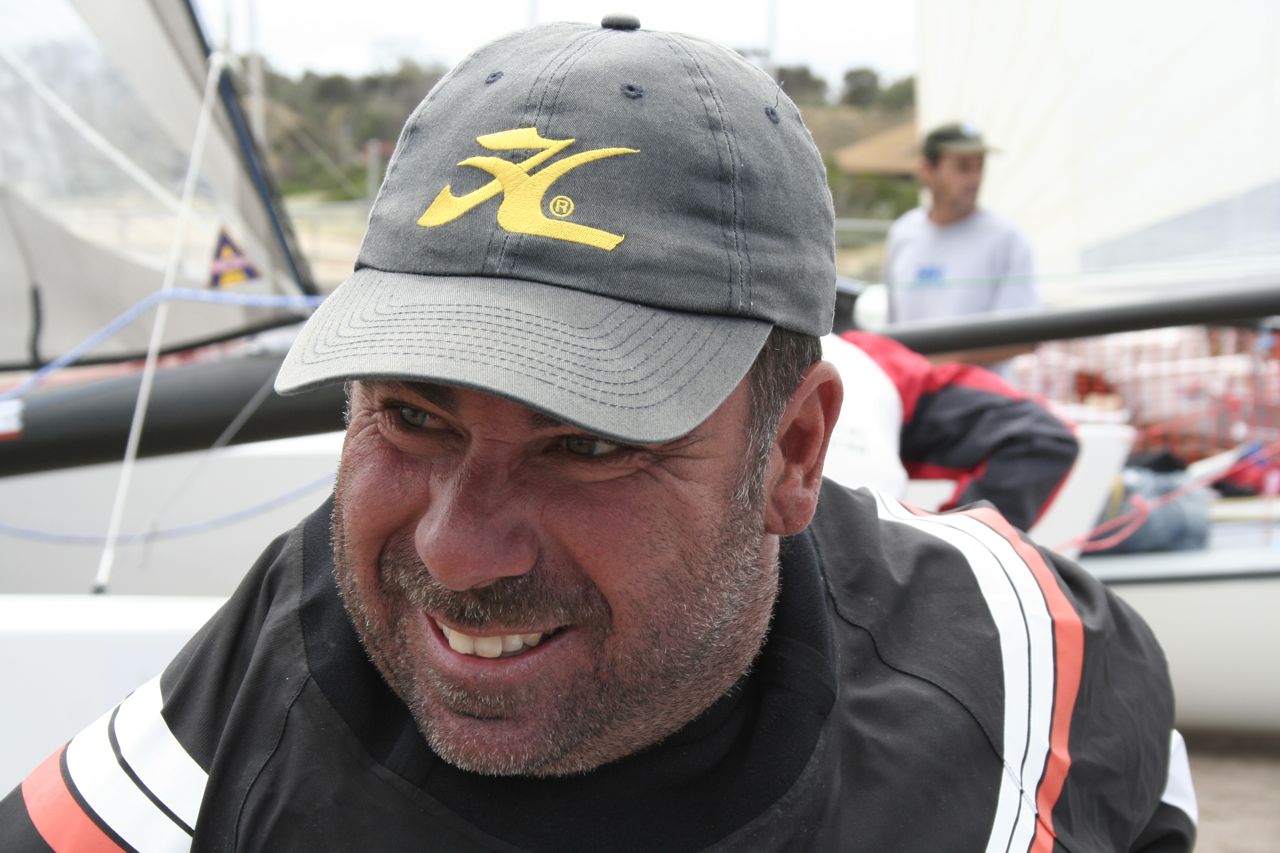
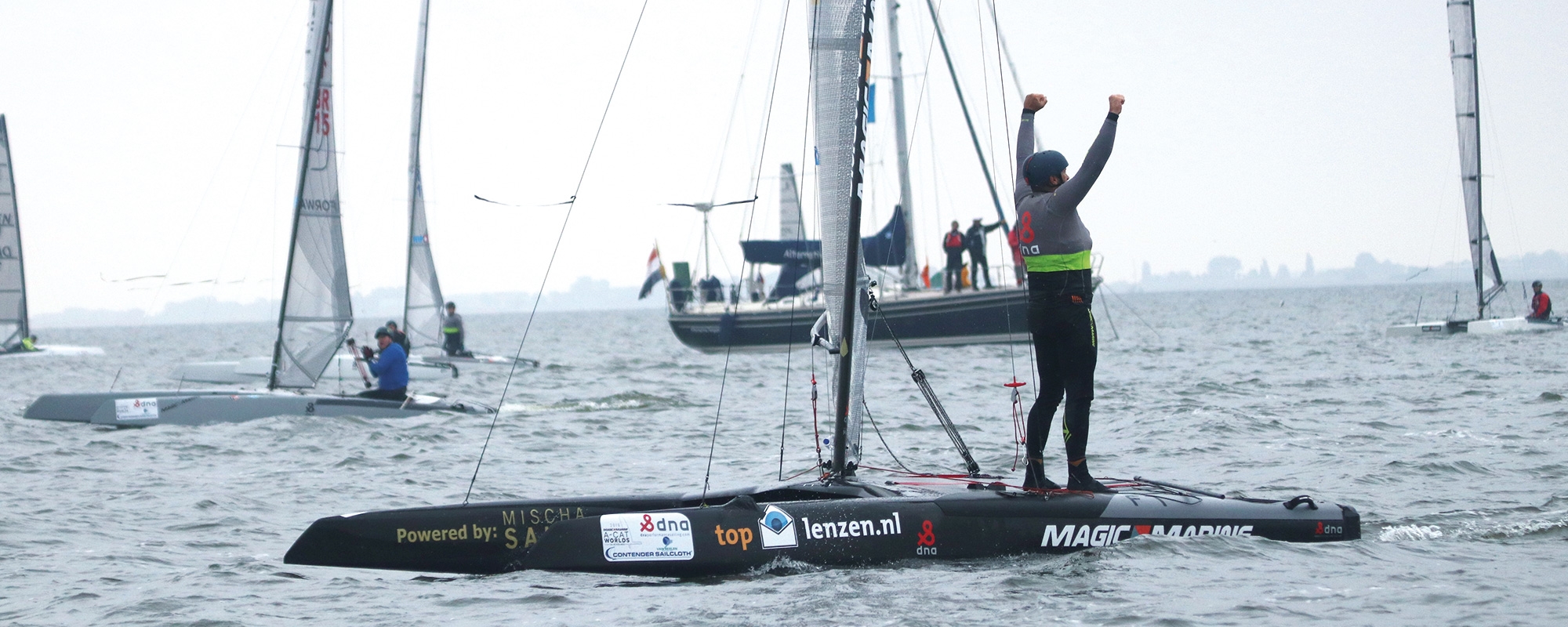
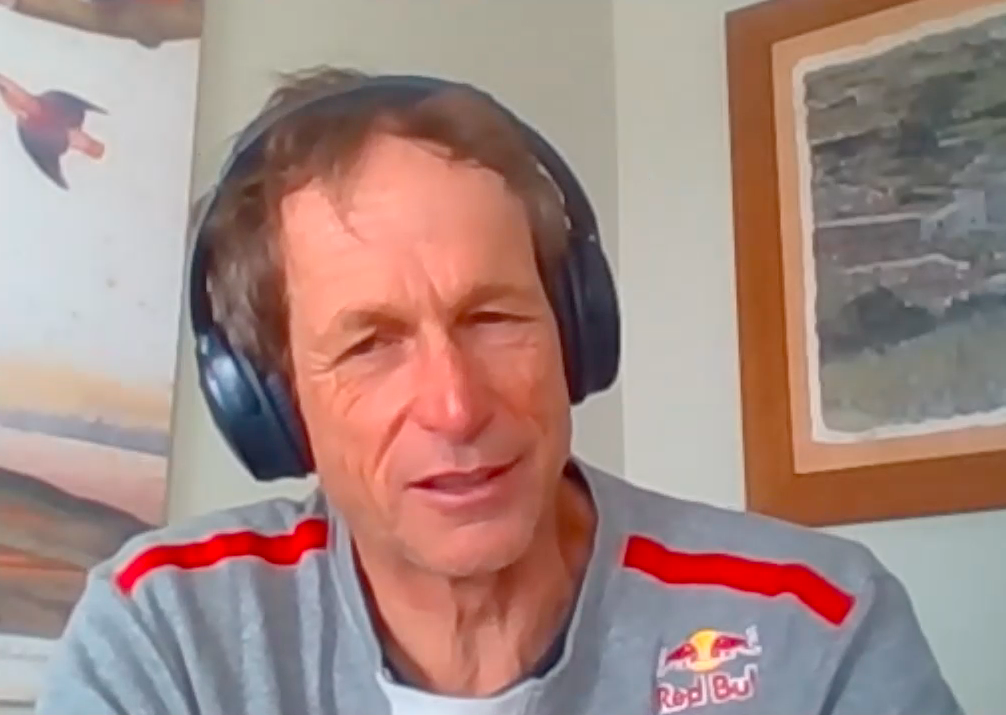
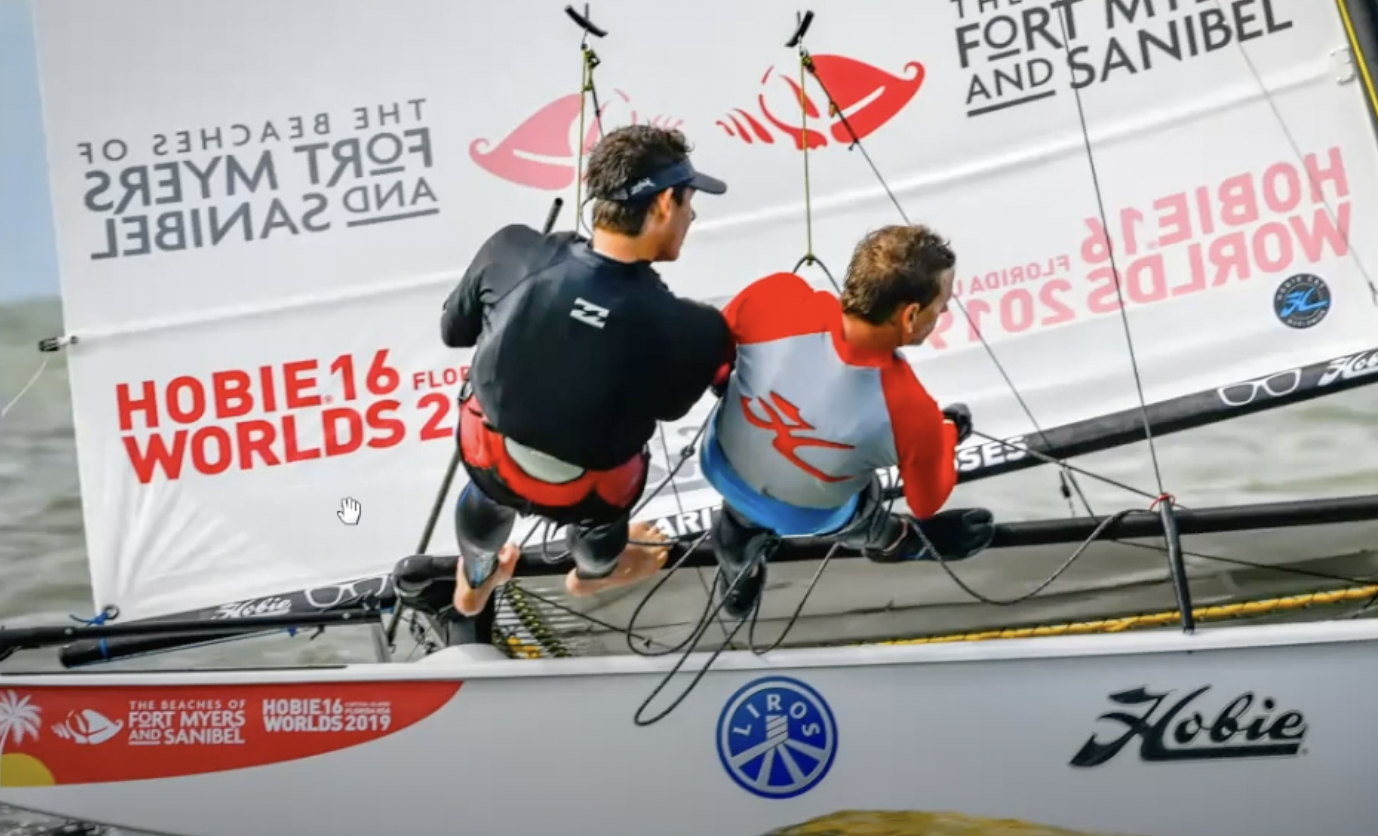 Hobie and F18 Aussie supremo Gavin Colby talks Sailjuice's Mike Madge through the techniques for speed in a straight line and speed in the turns..
Hobie and F18 Aussie supremo Gavin Colby talks Sailjuice's Mike Madge through the techniques for speed in a straight line and speed in the turns..